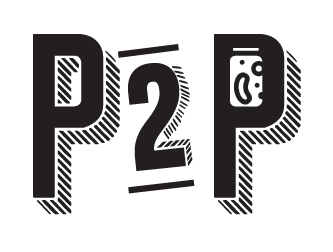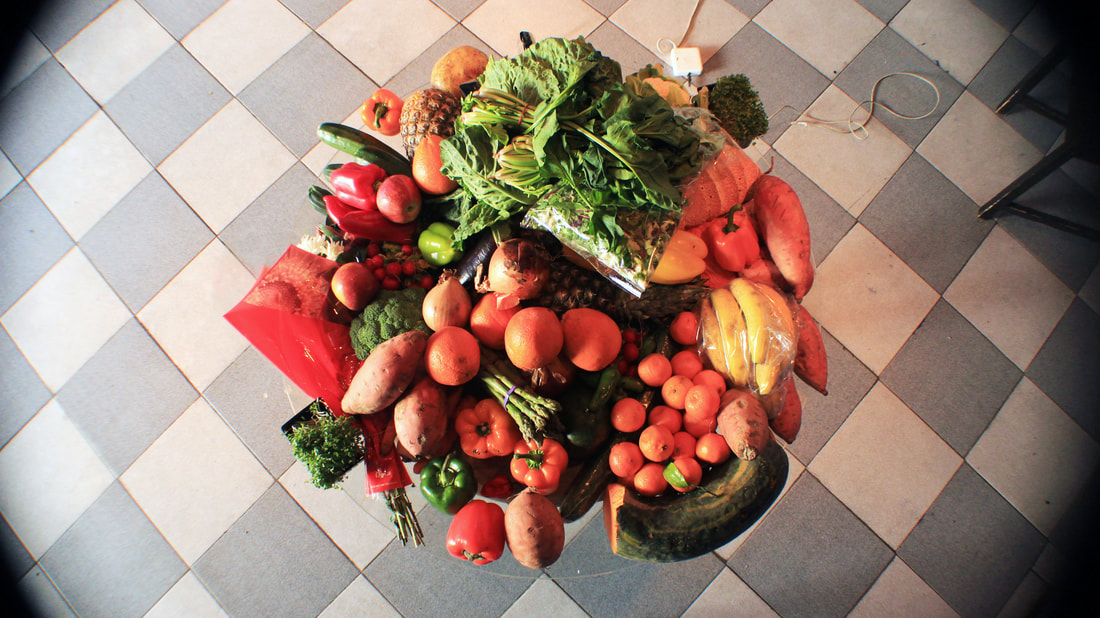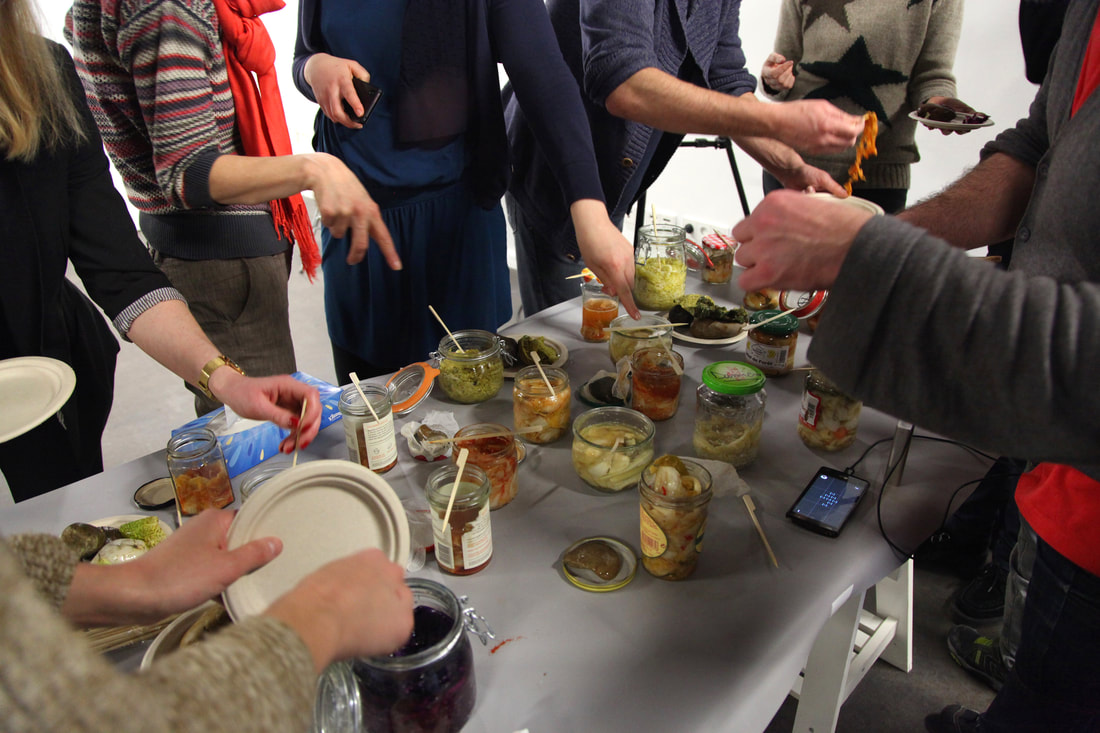Peer2Pickle is an apexart NYC Open Call exhibition and was open to the public from 2019/01/12 until 2019/03/09 @ apexart 291 Church Street, New York, NY 10013, USA
INTRODUCTION
Food waste is a growing problem with little governmental or corporate incentive to offer solutions. In the United States alone food waste constitutes about 30-40 percent of the food supply. This corresponded to approximately 133 billion pounds and $161 billion worth of food in 2010. In 2014 alone, more than 38 million tons of food waste was generated, with only five percent diverted from landfills and incinerators. In an effort to confront this situation Peer2Pickle reformats and transforms apexart’s space into a durational workshop, peer learning venue, and an ephemeral factory.
|
Peer2Pickle is not a conclusion, but rather the beginning of a collaboration which uses creative problem solving to discover new methods for transforming food waste in an attempt to pass along those solutions and inspire alternative economies. To initiate this process, four artists working between Asia, Europe, and North America have researched, collected, and repurposed disused organic matter from local sources near apexart as well as from other locations, transforming those materials into products with an extended shelf life and a revitalized economic value.
There is the cliché phrase American parents often tell their children, “you need to eat everything on your plate because there are starving children in Africa,” but there are also plenty of starving children in America. Food left on plates gets wasted—which is mainly an issue of portion sizes— but an even more problematic issue is that food is being thrown away at all stages of cultivation and distribution before it even has a chance to reach a plate. The problem is not just that useful things are being discarded, it is that needed food is being discarded, along with substantial amounts of labor, energy, and resources that are required to produce all of this food which is destined for the landfill. When someone imagines wasted food, they probably picture a dumpster filled with produce that is spoiled and rotting, but a lot of fruits and vegetables are thrown away before even leaving the farm. Mo Chieh / 莫捷's documentary work titled Perfect Vegetables explores different levels at which waste food is being produced in her home country of Taiwan. In particular it profiles the farmers who can’t sell all of their fresh vegetables to supermarkets unless these vegetables fit certain size, shape, and weight requirements. Perfect Vegetables highlights an overlooked problem in our contemporary food chain, and our ideals of what the perfect vegetable should look like. |
A lot of food becomes waste before it even arrives to the market, but this becomes most visible after it leaves the store shelves. Both Andrew Gryf Paterson and Justin Tyler Tate have made work for the exhibition which utilizes and resuscitates food after it has been thrown away, with the goal of transforming it into an aestheticized version of its previous form. In Paterson’s work, he breaks down the organic matter of discarded fibrous vegetables into an unrecognizable macerated pulp, then he dries and reconstitutes that matter into sheets of paper. Homemade fermented food spreads can then be applied to the paper to create edible paintings, diagrams, notes or love letters. In the exhibition this process is presented as both an installation as well as a public workshop exploring a do-it-with-others approach to the different ways in which it may be possible to make and use edible paper. Using the same essential ingredients as Paterson, Tate uses a chemical and biological approach in the manipulation and revival of waste food for the exhibition. Tate’s installation is comprised of waste foods which are rejuvenated through interventions using bacteria, dehydration, salt, vinegar or ethanol, then aestheticized, and made available for reproduction. He looks to find useful ways in which New York City’s waste food can be transformed, and how information about that process can be distributed.
Going beyond our conceptions of food as well as waste, Agnieszka Pokrywka’s work in the exhibition is a series of tutorials that instructs viewers on how they can utilize those constantly growing parts of the body such as hair, skin and bacteria, and repurpose them into edibles and objects for daily use. Through this work, Pokrywka compares contemporary trends of upcycling the materials that we don’t find a use for anymore with saving those which we don’t actually need, all the while examining our collective narcissistic obsessions that have been mediated and amplified through 21st Century technology.
|
Throughout the exhibition, the artists apply their unique perspectives, personal histories, technical skills, and methods of problem solving to create something from what most would consider to be nothing. They analyze the processes of the food production chain, see what results, and then conceptualize alternative outcomes. It is not enough to understand that a problem exists in order to find a solution. Food waste is of course a dilemma that must be recognized, but it must also be analyzed as Mo Chieh/莫捷 does in her documentary. Food waste must also be reduced and restrategized, as Andrew Gryf Paterson and Justin Tyler Tate do in their installations, and the cultural norms which govern disposability and reusability must be called into question, as Agnieszka Pokrywka does in her work.
|
Peer2Pickle isn’t just an exhibition. The methods involved within the exhibition will be disseminated on the project’s website as open source recipes, tutorials, and guides. The stages of each process involved in the transformation of waste food will be documented, and the labor costs that accumulate during this transformation will be broken down and appraised in relation to the local economy. Through this process of reanimating and revaluing these discarded materials, waste food is not only given new purpose, but also it incentivizes its rescue from the landfill. The exhibition attempts not just to divert a portion of New York’s food waste but presents a case study for the purpose of developing solutions that can give rise to alternative economies and can be adopted anywhere that food waste is abundant. Peer2Pickle not only highlights the issue of waste food, it creates a format where it can be diminished through collective problem solving and open-source solutions.
Peer2Pickle plays with and manipulates the gallery format in a site-specific manner while looking to address global issues of food production, food shortages and the environmental problems that arise from these issues, such as increased greenhouse gasses caused by decomposition, diminishing food security, a lack of equal access to healthy food, as well as wasted resources and labor. Through the works in the exhibition and the ways in which they are presented, Peer2Pickle creates and disseminates formulas for transforming food waste into products with an extended life and economic value, which can be adjusted by motivated actors to suit the needs of any given location.
Boundaries are blurred as the gallery turns from a white cube into a grey area between art and activism, commons and capital, in addition to environment and society. Entering the space then becomes an experiential event with four artists’ works producing an array of colors, sights, smells, sounds, tastes and textures. As visitors to apexart meander through the gallery, they are invited to participate, to partake, and to take home.
Peer2Pickle plays with and manipulates the gallery format in a site-specific manner while looking to address global issues of food production, food shortages and the environmental problems that arise from these issues, such as increased greenhouse gasses caused by decomposition, diminishing food security, a lack of equal access to healthy food, as well as wasted resources and labor. Through the works in the exhibition and the ways in which they are presented, Peer2Pickle creates and disseminates formulas for transforming food waste into products with an extended life and economic value, which can be adjusted by motivated actors to suit the needs of any given location.
Boundaries are blurred as the gallery turns from a white cube into a grey area between art and activism, commons and capital, in addition to environment and society. Entering the space then becomes an experiential event with four artists’ works producing an array of colors, sights, smells, sounds, tastes and textures. As visitors to apexart meander through the gallery, they are invited to participate, to partake, and to take home.

This website is the archive for 'Peer2Pickle' organized by Justin Tyler Tate
and is licensed under a Creative Commons Attribution-ShareAlike 4.0 International License. 2019.







